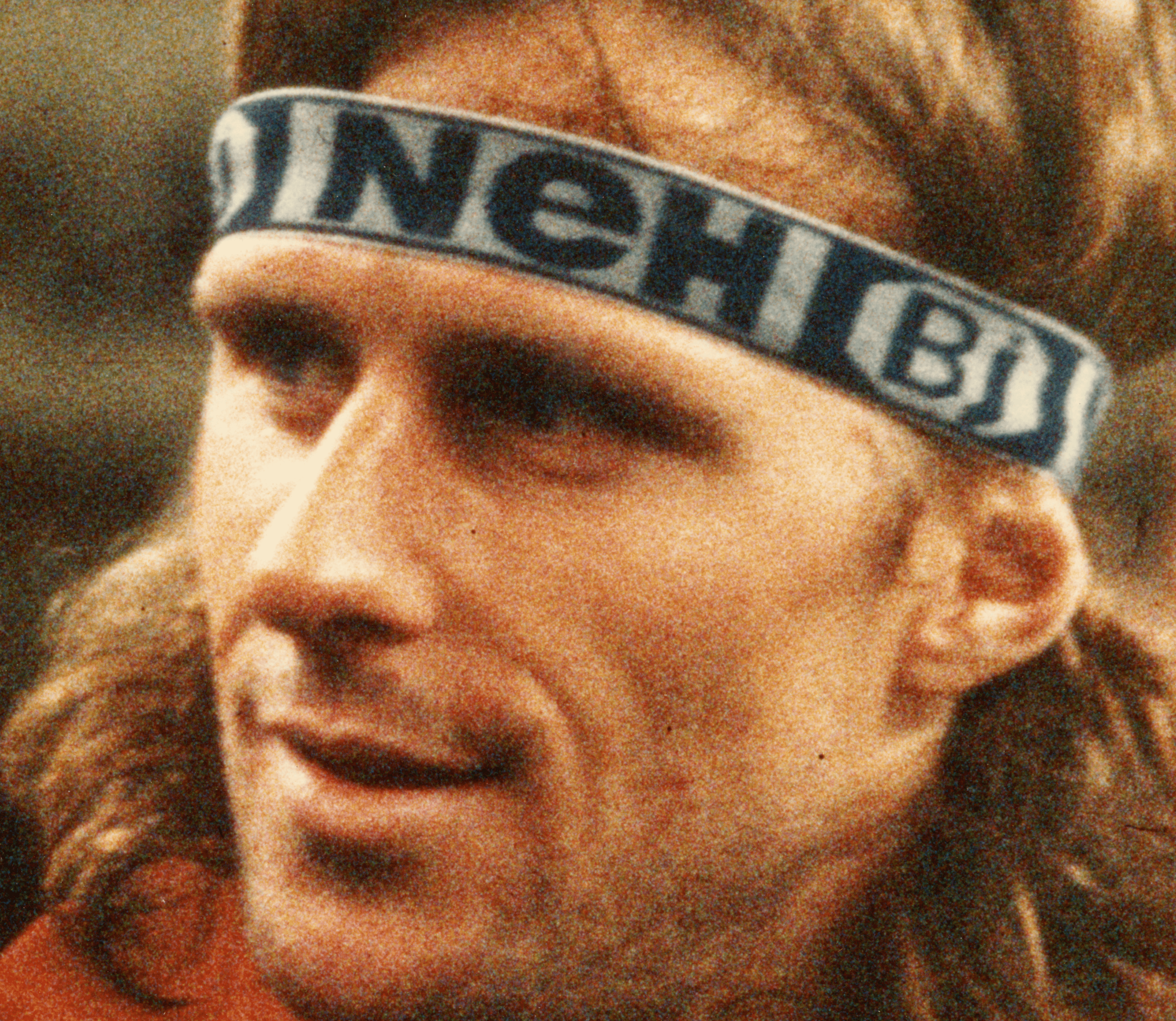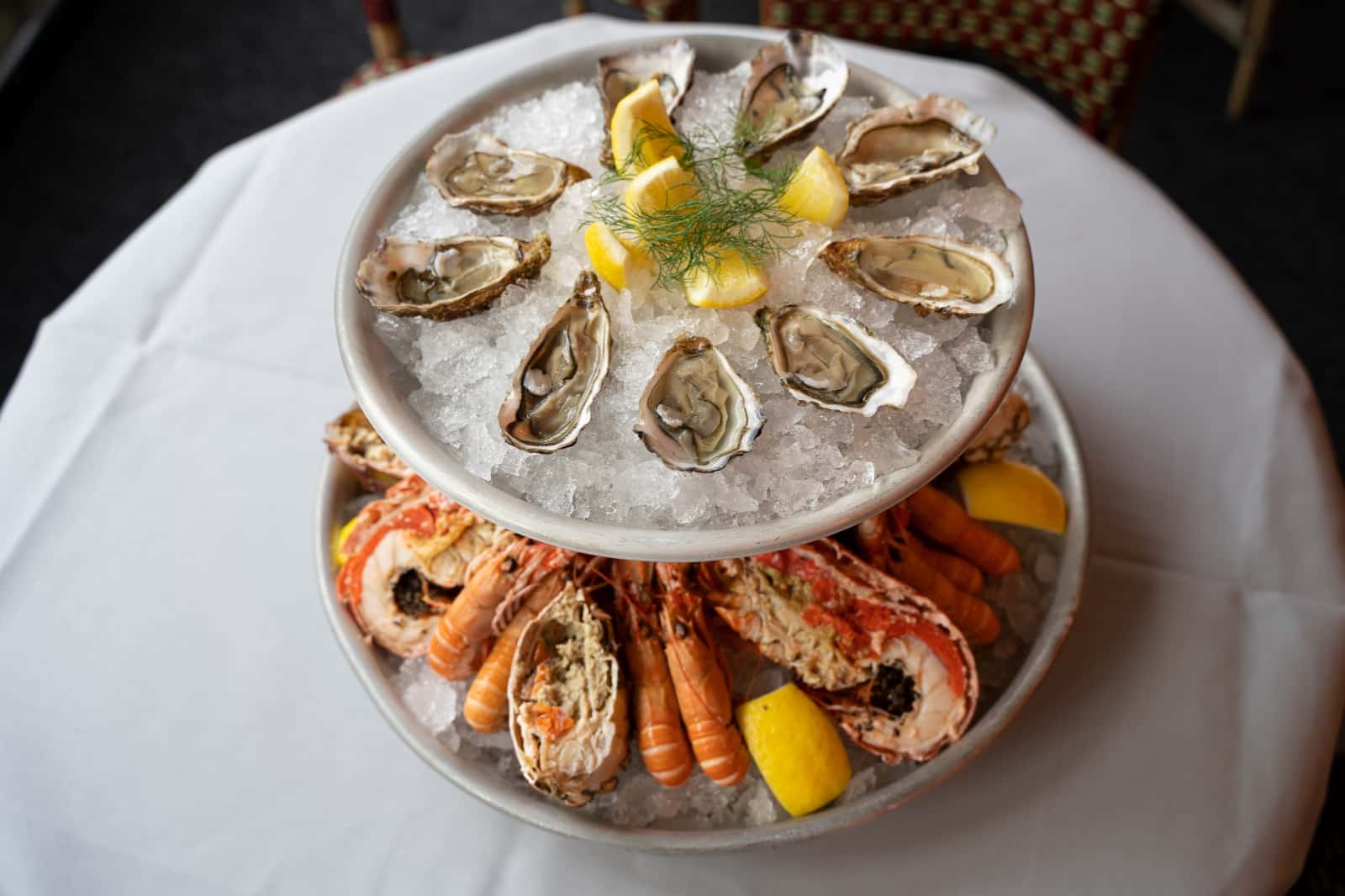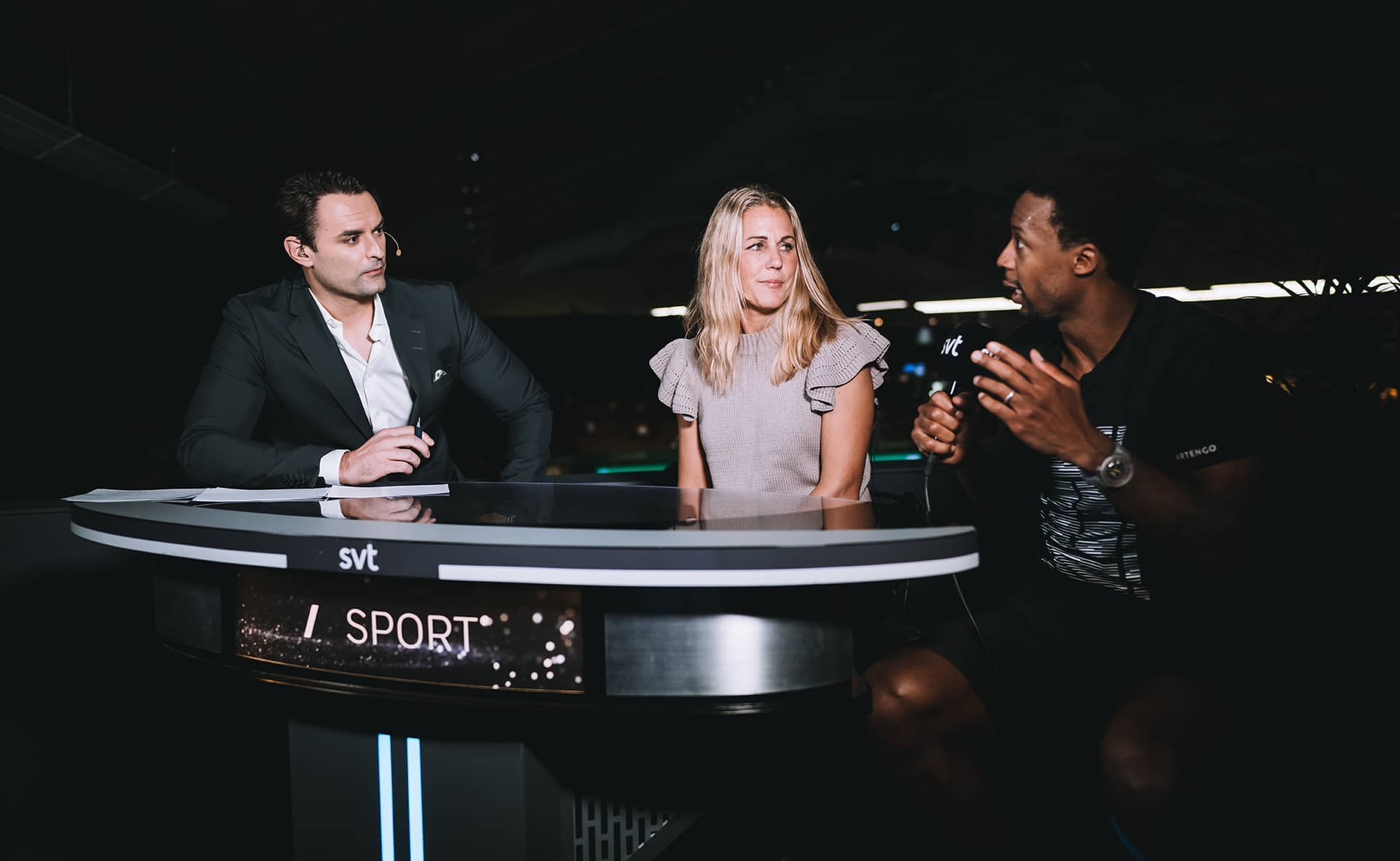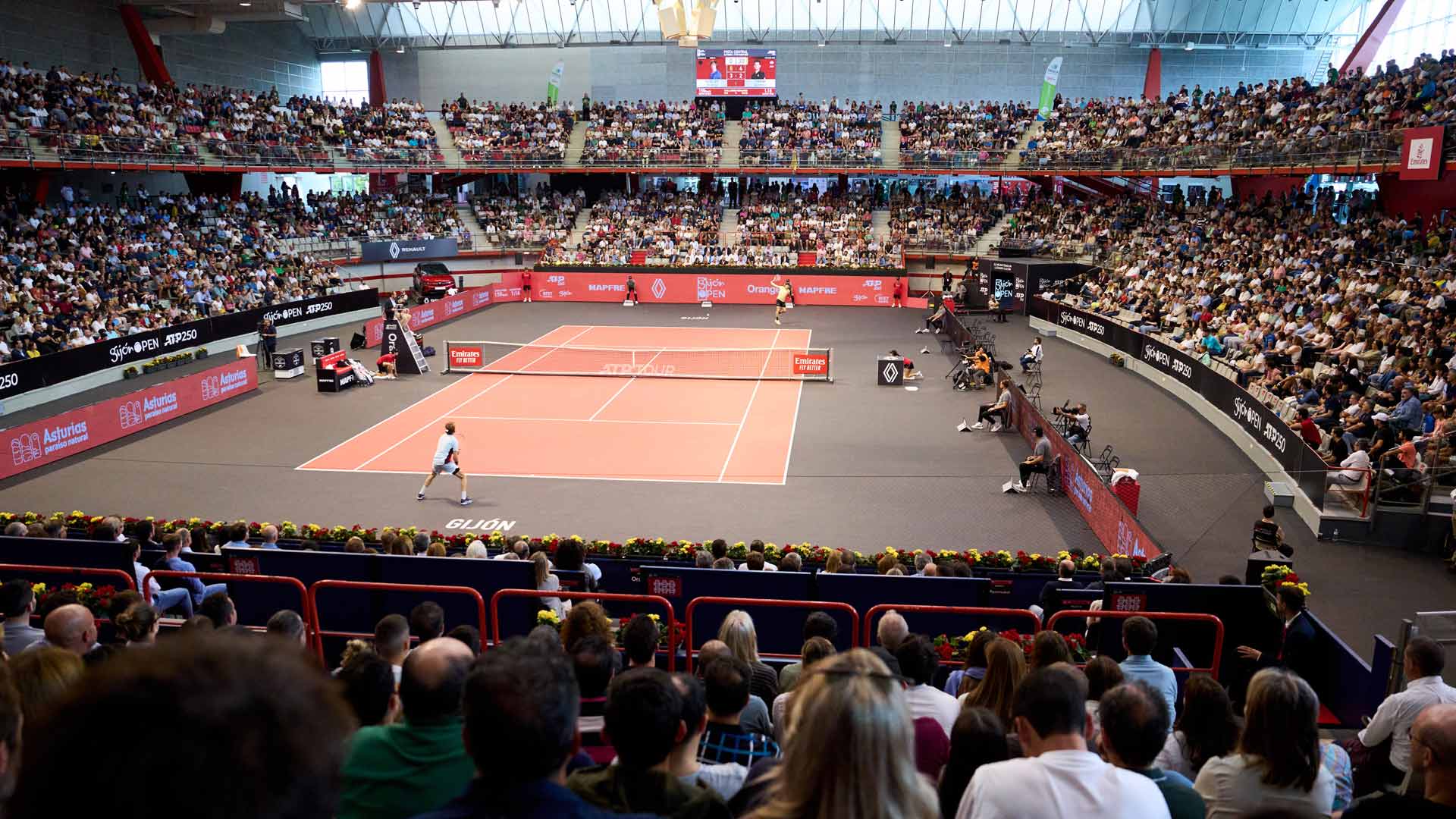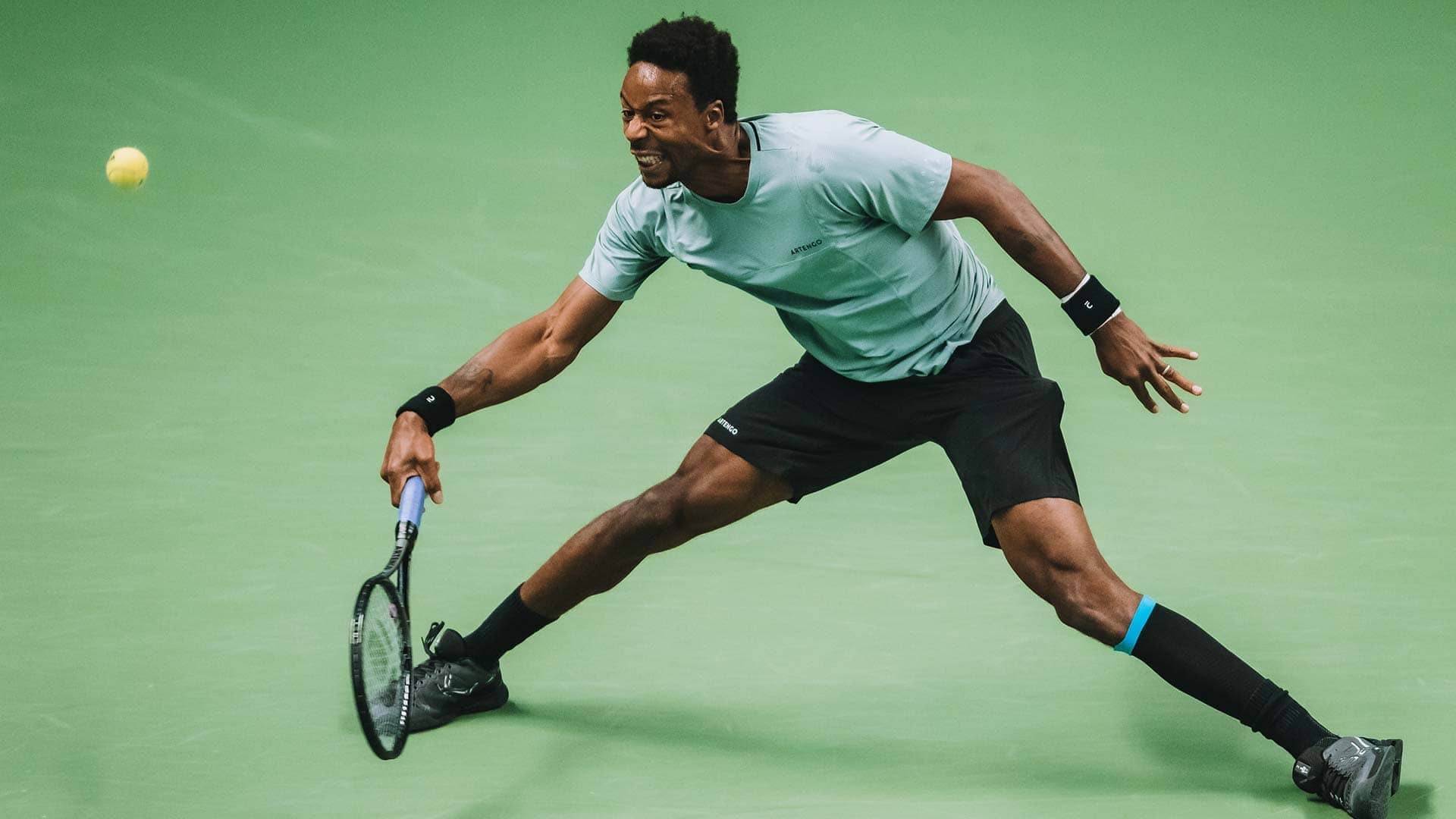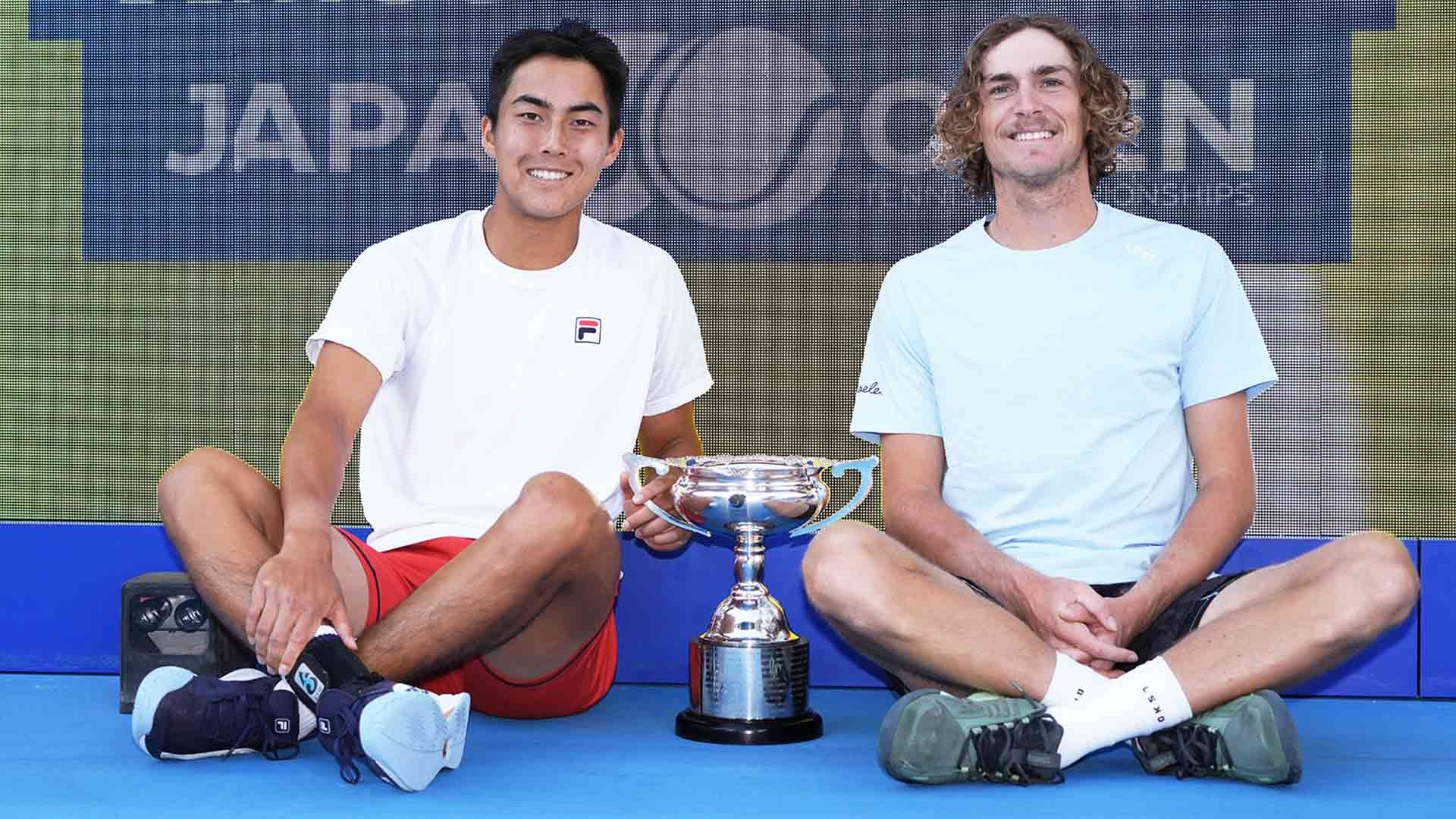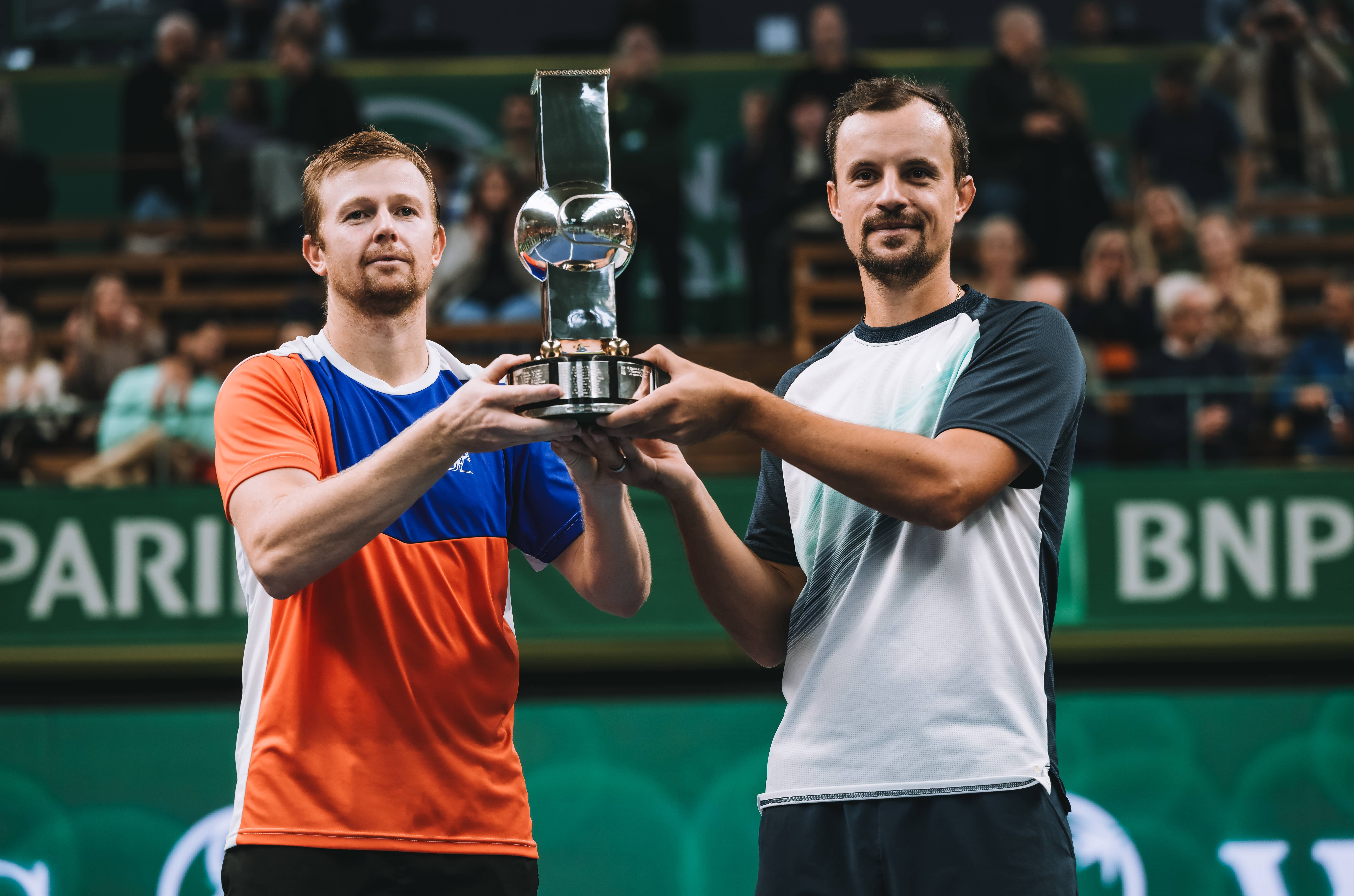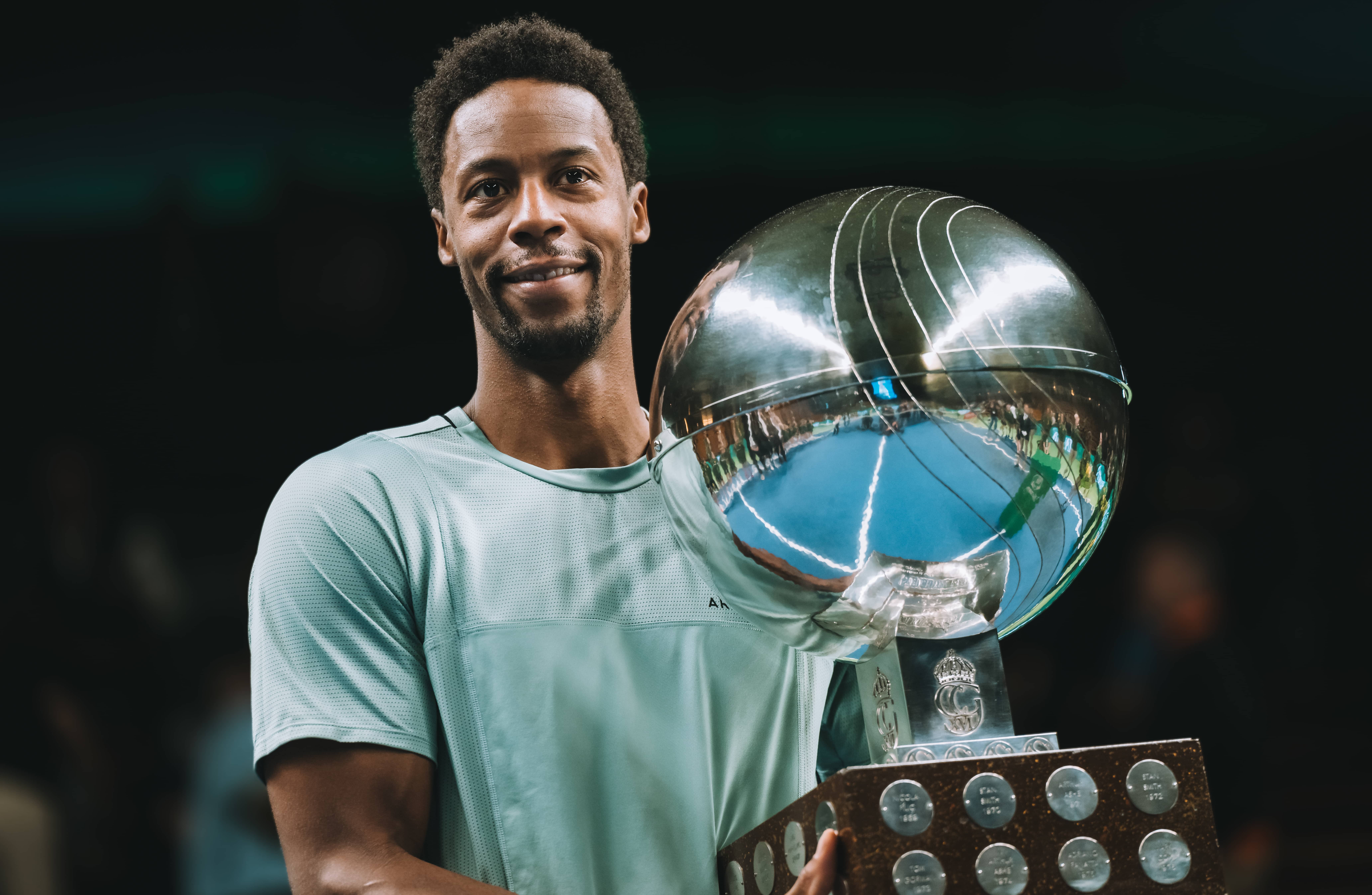1980
A Surface that Suited Borg
Björn Borg liked what he heard when he found out that the Stockholm Open would be played on a slower surface. The old reliable Holmsund tiles were getting worn out, and it was time for a change. But there wasn't much time before the tournament, so instead of ripping out the old and putting in the new, a makeshift solution was chosen.
On top of the Holmsund tiles, a portable rubber mat with very slow properties was rolled out. The new surface was unfamiliar to the elite players, and some thought the balls behaved strangely. Among them, of course, was John McEnroe.
But Björn Borg decided to participate. He was seeking revenge against McEnroe, not only for their semifinal clash two years prior but also for a final loss in the U.S. Open a couple of months before.
McEnroe eventually adapted to the surface and made it to the final without losing a set. Borg, on the other hand, had a tough time against Yannick Noah but still made it all the way. In the final, he finally got his revenge, winning 6-3, 6-4.
This marked Björn Borg's first victory in the Stockholm Open. He had reached the final in 1973 but lost to Tom Okker, and in 1974, he lost in the semifinals to the same Okker. But now, the joy of victory was complete, and the audience was ecstatic.
The tournament had a happy ending despite facing issues related to the Swedish Immigration Authority. Apartheid laws were in place in South Africa, and the world had started to take action against them. It wasn't until the last moment that South African players were allowed to participate in the tournament.
Hana Mandlíková from Czechoslovakia won the women's class, but this was the last time women competed in the Stockholm Open, at least up to that point. It was nearly impossible to sustain financially without any Swedish female players in the world's top ranks.
1981
New Surface, New Generation
Being a tournament organizer isn't easy. John McEnroe was upset that he hadn't been able to play on the surface he considered perfect in 1979, so he skipped the tournament in 1981, even though the slow court wouldn't be used. Instead, the old Holmsund tiles were replaced with a Plexipave surface that many perceived to be fair, suitable for both baseline players and net players.
Borg, who had enjoyed the rubber mat, also didn't participate. But it had more to do with his decision to take a break from playing.
The field suddenly looked quite modest. However, a call from Jimmy Connors' agent changed that. Jimmy wanted a wild card, possibly because he had realized the opportunity to win another major tournament, and of course, he got it.
However, he didn't win. He was outplayed in the semifinals by the serving specialist Sandy Mayer, who then faced his younger brother and training partner Gene Mayer in the final and lost decisively.
The audience missed Borg, but on the other hand, they could rejoice in a brand new generation of young Swedes. Notably, 17-year-old Mats Wilander. This guy could become something special.
1982
The Tournament's Worst Crisis
South Africa was at the center of attention when the Stockholm Open faced its worst crisis before this year's tournament. Pressured – by the Swedish government.
After the Social Democrats won the election in September, the Palme government immediately decided that athletes from the apartheid regime of South Africa would not be welcome to compete in Sweden. The ban was implemented immediately. The problem was that two South African players had already signed up for the tournament and applied for visas.
After a quick trip to Paris by the tournament director Hans-Åke Sturén, the problem was resolved with a dispensation, but the Stockholm Open was fined $25,000 by the Pro Council. The Pro Council also decided that Stockholm would be removed from the Grand Prix program if South Africans were not allowed to play in the future.
Well, the tournament was eventually held. The public interest was focused on Mats Wilander, who, despite some challenges, reached the final against the Frenchman Henri Leconte, whom he had a clear advantage over in previous encounters.
However, Wilander was a bit worn out, and Leconte was in form. The Frenchman won with a score of 7-6, 6-3.
1983
The Swedish Tennis Miracle
The South Africa issue was temporarily resolved by the South African players. They understood the dilemma of Stockholm Open and chose not to sign up.
Björn Borg was also not registered. He had ended his career at the age of 26.
Still, things looked good. Wilander would come, Connors would come, McEnroe would come. Gene Mayer too, and Gerulaitis, and of course last year's winner Leconte.
But at the last moment, problems arose. McEnroe was suspended after swearing at a referee one time too many, Noah got injured as did Sandy Mayer. And Connors suddenly decided he didn't feel like flying to Stockholm.
Annoying, of course. But the organizers had an ace up their sleeve, namely the Swedish tennis miracle. Plenty of promising players filling the void left by Borg in a pleasant way.
Above all, Mats Wilander was a trump card. He had won seven GP tournaments during the year and came to Stockholm as the favorite.
He was in trouble against the Swiss Günthardt, but he managed the crisis and went through the tournament without losing a set to anyone except Günthardt.
1984
Sweden against the USA all autumn
The Swedish youngsters had made it to the Davis Cup final. It would be played in Gothenburg in December, and Stockholm Open was perfectly timed in early November.
All the best Americans participated, including Connors despite being fined $10,000 for missing the previous year, and of course, all the Swedes. Additionally, some other strong names, including the South African Johan Kriek. He was able to participate due to having changed citizenship and becoming American.
Three Swedes and three Americans reached the quarterfinals, two Swedes and two Americans reached the semifinals.
McEnroe knocked out Järryd, and Wilander knocked out Connors, both in tough three-set matches – leaving one Swedish and one American for the final.
McEnroe had overcome Anders Järryd in the semifinal with his outbursts of anger, which was the worst behavior seen at this level of the tournament so far.
1985
McEnroe skillful and composed
John McEnroe had been dealing with a shoulder injury during part of the autumn and was eager to come to Stockholm once again to try to put the young Swedish players in their place.
Well, he wasn't that old himself – hadn't even turned 27 yet – but much more experienced than most.
The first Swede he encountered was Peter Lundgren, who had impressed in the first two rounds but was outplayed by McEnroe, 6–1, 6–3.
It was in the quarterfinals, and after that, only four players remained. John McEnroe – and three young, hungry Swedes. Even though Mats Wilander had been eliminated in the first round.
Anders Järryd defeated Jocke Nyström in one semifinal, and McEnroe played cleverly against Stefan Edberg, always having good answers to his shots. Two straight sets for McEnroe.
And in the final, he truly showed his class. Järryd tried everything but fell 6–1, 6–2.
Yes, McEnroe impressed. Not only with his tennis, but he hardly had any outbursts of anger throughout the entire tournament.
1986
Everything clicked for Edberg in the final
Even John McEnroe had grown tired of traveling around the world and mainly played doubles when it came to him.
He probably missed the intense matches with Björn Borg – he later said those matches were the only ones that truly meant something during his career.
Jimmy Connors hadn't retired yet but was on the decline in terms of performance and avoided long trips like to Stockholm.
For these reasons, the Stockholm Open took on a more European character this year. Among the 16 seeded players, only four were Americans – seven were young Swedes.
There was also an all-Swedish final. Stefan Edberg fought his way through and won two closely contested matches (against Richard Matuszewski and Henri Leconte) with a 7–6 tiebreaker. Mats Wilander also had to work hard to reach the final, but he didn't lose a set, so he was the favorite in the all-Swedish final.
The match was best of five sets – but it only took three. Stefan was completely dominant and won 6–2, 6–1, 6–1.
1987
Complete Swedish dominance
The Swedish dominance in the tournament was now total. Out of the top eight seeds, seven were Swedes, and after four rounds, it was clear that the four players in the semifinals were all Swedes. And yet, Mats Wilander had been eliminated in the second round!
Certainly, stars like Boris Becker, McEnroe, Connors, and Ivan Lendl were absent, and if any of them had participated, they probably would have reached at least the semifinals. But Sweden was an undeniable powerhouse – nine out of the top 30 ranked players in the world were Swedes.
The public interest was enormous, and many had to leave disappointed without a ticket. Tens of thousands, in fact.
In one semifinal, Stefan Edberg faced Anders Järryd. A moral final, you might say.
Edberg won easily – and in the other semifinal, Jonas Svensson did the same against Magnus Gustafsson.
In the final, Svensson managed to take the third set, but he couldn't really threaten. Edberg won 7–5, 6–2, 4–6, 6–4, thus becoming the champion for the second year in a row.
1988
More patience would have earned Lundgren the prize
Mats Wilander had won three Grand Slam tournaments during the year, and Stefan Edberg won the fourth, Wimbledon. So, it was natural for the Stockholm audience to expect them to meet in the final.
But for various reasons, both were ill-prepared and were eliminated before the quarterfinals. Mats admitted that he had started to lose motivation and indeed never returned to his peak level after this season.
The life of an elite player was glamorous but also demanding. The pursuit of ever-growing purses erased the playfulness on the court, a sentiment also lamented by old top players like Rod Laver and Ilie Năstase when Boris Becker was celebrated during the prize ceremony.
Speaking of Becker, he reached the final against the sensation Peter Lundgren – who saved the tournament from a Swedish perspective – and won despite playing with a foot injury. He had considered withdrawing but took a chance, and it paid off.
Becker couldn't understand why Lundgren was in such a hurry out there.
"If he had stayed at the baseline and rallied, he would have won. I could never have lasted more than three sets."
And indeed, it was only three sets. Becker won 6–4, 6–1, 6–1.
1989
Fanfare and Celebration in the New Globen
The pressure from the public during the 1980s, when Sweden dominated world tennis, had led to the need for a larger arena for the Stockholm Open. The Royal Tennis Hall was cozy and intimate, but it wasn't pleasant to have to turn down thousands of interested people every year.
So, the tournament moved to the newly built Globe Arena – which actually looks like a giant tennis ball – where everyone could gather around the center court. And indeed, there was a need for increased seating capacity, as it turned out to be another Swedish success.
Wilander and Edberg weren't in their best form but still reached the semifinals, as did the surprise player Magnus Gustafsson. Three Swedes in the semifinals, therefore.
Wilander lost his match against Gustafsson, and Edberg lost his match against Ivan Lendl.
Would another Swedish player truly break through? The fact that 22-year-old Skåne native Gustafsson made it to the final was a sensation and a small indication that a new Swedish generation was on the rise.
However, he couldn't quite match Lendl's level. The Czech won 7–5, 6–0, 6–3.
For the organizers, it was a triumphant celebration. 118,000 people attended the tournament, and Stockholm Open had become a success both financially and in terms of publicity.
On Thursday evening, when Jan Gunnarsson defeated Boris Becker in straight sets in the third round, the cheers could be heard almost all the way back to the Royal Tennis Hall.
A Surface that Suited Borg
Björn Borg liked what he heard when he found out that the Stockholm Open would be played on a slower surface. The old reliable Holmsund tiles were getting worn out, and it was time for a change. But there wasn't much time before the tournament, so instead of ripping out the old and putting in the new, a makeshift solution was chosen.
On top of the Holmsund tiles, a portable rubber mat with very slow properties was rolled out. The new surface was unfamiliar to the elite players, and some thought the balls behaved strangely. Among them, of course, was John McEnroe.
But Björn Borg decided to participate. He was seeking revenge against McEnroe, not only for their semifinal clash two years prior but also for a final loss in the U.S. Open a couple of months before.
McEnroe eventually adapted to the surface and made it to the final without losing a set. Borg, on the other hand, had a tough time against Yannick Noah but still made it all the way. In the final, he finally got his revenge, winning 6-3, 6-4.
This marked Björn Borg's first victory in the Stockholm Open. He had reached the final in 1973 but lost to Tom Okker, and in 1974, he lost in the semifinals to the same Okker. But now, the joy of victory was complete, and the audience was ecstatic.
The tournament had a happy ending despite facing issues related to the Swedish Immigration Authority. Apartheid laws were in place in South Africa, and the world had started to take action against them. It wasn't until the last moment that South African players were allowed to participate in the tournament.
Hana Mandlíková from Czechoslovakia won the women's class, but this was the last time women competed in the Stockholm Open, at least up to that point. It was nearly impossible to sustain financially without any Swedish female players in the world's top ranks.
1981
New Surface, New Generation
Being a tournament organizer isn't easy. John McEnroe was upset that he hadn't been able to play on the surface he considered perfect in 1979, so he skipped the tournament in 1981, even though the slow court wouldn't be used. Instead, the old Holmsund tiles were replaced with a Plexipave surface that many perceived to be fair, suitable for both baseline players and net players.
Borg, who had enjoyed the rubber mat, also didn't participate. But it had more to do with his decision to take a break from playing.
The field suddenly looked quite modest. However, a call from Jimmy Connors' agent changed that. Jimmy wanted a wild card, possibly because he had realized the opportunity to win another major tournament, and of course, he got it.
However, he didn't win. He was outplayed in the semifinals by the serving specialist Sandy Mayer, who then faced his younger brother and training partner Gene Mayer in the final and lost decisively.
The audience missed Borg, but on the other hand, they could rejoice in a brand new generation of young Swedes. Notably, 17-year-old Mats Wilander. This guy could become something special.
1982
The Tournament's Worst Crisis
South Africa was at the center of attention when the Stockholm Open faced its worst crisis before this year's tournament. Pressured – by the Swedish government.
After the Social Democrats won the election in September, the Palme government immediately decided that athletes from the apartheid regime of South Africa would not be welcome to compete in Sweden. The ban was implemented immediately. The problem was that two South African players had already signed up for the tournament and applied for visas.
After a quick trip to Paris by the tournament director Hans-Åke Sturén, the problem was resolved with a dispensation, but the Stockholm Open was fined $25,000 by the Pro Council. The Pro Council also decided that Stockholm would be removed from the Grand Prix program if South Africans were not allowed to play in the future.
Well, the tournament was eventually held. The public interest was focused on Mats Wilander, who, despite some challenges, reached the final against the Frenchman Henri Leconte, whom he had a clear advantage over in previous encounters.
However, Wilander was a bit worn out, and Leconte was in form. The Frenchman won with a score of 7-6, 6-3.
1983
The Swedish Tennis Miracle
The South Africa issue was temporarily resolved by the South African players. They understood the dilemma of Stockholm Open and chose not to sign up.
Björn Borg was also not registered. He had ended his career at the age of 26.
Still, things looked good. Wilander would come, Connors would come, McEnroe would come. Gene Mayer too, and Gerulaitis, and of course last year's winner Leconte.
But at the last moment, problems arose. McEnroe was suspended after swearing at a referee one time too many, Noah got injured as did Sandy Mayer. And Connors suddenly decided he didn't feel like flying to Stockholm.
Annoying, of course. But the organizers had an ace up their sleeve, namely the Swedish tennis miracle. Plenty of promising players filling the void left by Borg in a pleasant way.
Above all, Mats Wilander was a trump card. He had won seven GP tournaments during the year and came to Stockholm as the favorite.
He was in trouble against the Swiss Günthardt, but he managed the crisis and went through the tournament without losing a set to anyone except Günthardt.
1984
Sweden against the USA all autumn
The Swedish youngsters had made it to the Davis Cup final. It would be played in Gothenburg in December, and Stockholm Open was perfectly timed in early November.
All the best Americans participated, including Connors despite being fined $10,000 for missing the previous year, and of course, all the Swedes. Additionally, some other strong names, including the South African Johan Kriek. He was able to participate due to having changed citizenship and becoming American.
Three Swedes and three Americans reached the quarterfinals, two Swedes and two Americans reached the semifinals.
McEnroe knocked out Järryd, and Wilander knocked out Connors, both in tough three-set matches – leaving one Swedish and one American for the final.
McEnroe had overcome Anders Järryd in the semifinal with his outbursts of anger, which was the worst behavior seen at this level of the tournament so far.
1985
McEnroe skillful and composed
John McEnroe had been dealing with a shoulder injury during part of the autumn and was eager to come to Stockholm once again to try to put the young Swedish players in their place.
Well, he wasn't that old himself – hadn't even turned 27 yet – but much more experienced than most.
The first Swede he encountered was Peter Lundgren, who had impressed in the first two rounds but was outplayed by McEnroe, 6–1, 6–3.
It was in the quarterfinals, and after that, only four players remained. John McEnroe – and three young, hungry Swedes. Even though Mats Wilander had been eliminated in the first round.
Anders Järryd defeated Jocke Nyström in one semifinal, and McEnroe played cleverly against Stefan Edberg, always having good answers to his shots. Two straight sets for McEnroe.
And in the final, he truly showed his class. Järryd tried everything but fell 6–1, 6–2.
Yes, McEnroe impressed. Not only with his tennis, but he hardly had any outbursts of anger throughout the entire tournament.
1986
Everything clicked for Edberg in the final
Even John McEnroe had grown tired of traveling around the world and mainly played doubles when it came to him.
He probably missed the intense matches with Björn Borg – he later said those matches were the only ones that truly meant something during his career.
Jimmy Connors hadn't retired yet but was on the decline in terms of performance and avoided long trips like to Stockholm.
For these reasons, the Stockholm Open took on a more European character this year. Among the 16 seeded players, only four were Americans – seven were young Swedes.
There was also an all-Swedish final. Stefan Edberg fought his way through and won two closely contested matches (against Richard Matuszewski and Henri Leconte) with a 7–6 tiebreaker. Mats Wilander also had to work hard to reach the final, but he didn't lose a set, so he was the favorite in the all-Swedish final.
The match was best of five sets – but it only took three. Stefan was completely dominant and won 6–2, 6–1, 6–1.
1987
Complete Swedish dominance
The Swedish dominance in the tournament was now total. Out of the top eight seeds, seven were Swedes, and after four rounds, it was clear that the four players in the semifinals were all Swedes. And yet, Mats Wilander had been eliminated in the second round!
Certainly, stars like Boris Becker, McEnroe, Connors, and Ivan Lendl were absent, and if any of them had participated, they probably would have reached at least the semifinals. But Sweden was an undeniable powerhouse – nine out of the top 30 ranked players in the world were Swedes.
The public interest was enormous, and many had to leave disappointed without a ticket. Tens of thousands, in fact.
In one semifinal, Stefan Edberg faced Anders Järryd. A moral final, you might say.
Edberg won easily – and in the other semifinal, Jonas Svensson did the same against Magnus Gustafsson.
In the final, Svensson managed to take the third set, but he couldn't really threaten. Edberg won 7–5, 6–2, 4–6, 6–4, thus becoming the champion for the second year in a row.
1988
More patience would have earned Lundgren the prize
Mats Wilander had won three Grand Slam tournaments during the year, and Stefan Edberg won the fourth, Wimbledon. So, it was natural for the Stockholm audience to expect them to meet in the final.
But for various reasons, both were ill-prepared and were eliminated before the quarterfinals. Mats admitted that he had started to lose motivation and indeed never returned to his peak level after this season.
The life of an elite player was glamorous but also demanding. The pursuit of ever-growing purses erased the playfulness on the court, a sentiment also lamented by old top players like Rod Laver and Ilie Năstase when Boris Becker was celebrated during the prize ceremony.
Speaking of Becker, he reached the final against the sensation Peter Lundgren – who saved the tournament from a Swedish perspective – and won despite playing with a foot injury. He had considered withdrawing but took a chance, and it paid off.
Becker couldn't understand why Lundgren was in such a hurry out there.
"If he had stayed at the baseline and rallied, he would have won. I could never have lasted more than three sets."
And indeed, it was only three sets. Becker won 6–4, 6–1, 6–1.
1989
Fanfare and Celebration in the New Globen
The pressure from the public during the 1980s, when Sweden dominated world tennis, had led to the need for a larger arena for the Stockholm Open. The Royal Tennis Hall was cozy and intimate, but it wasn't pleasant to have to turn down thousands of interested people every year.
So, the tournament moved to the newly built Globe Arena – which actually looks like a giant tennis ball – where everyone could gather around the center court. And indeed, there was a need for increased seating capacity, as it turned out to be another Swedish success.
Wilander and Edberg weren't in their best form but still reached the semifinals, as did the surprise player Magnus Gustafsson. Three Swedes in the semifinals, therefore.
Wilander lost his match against Gustafsson, and Edberg lost his match against Ivan Lendl.
Would another Swedish player truly break through? The fact that 22-year-old Skåne native Gustafsson made it to the final was a sensation and a small indication that a new Swedish generation was on the rise.
However, he couldn't quite match Lendl's level. The Czech won 7–5, 6–0, 6–3.
For the organizers, it was a triumphant celebration. 118,000 people attended the tournament, and Stockholm Open had become a success both financially and in terms of publicity.
On Thursday evening, when Jan Gunnarsson defeated Boris Becker in straight sets in the third round, the cheers could be heard almost all the way back to the Royal Tennis Hall.



